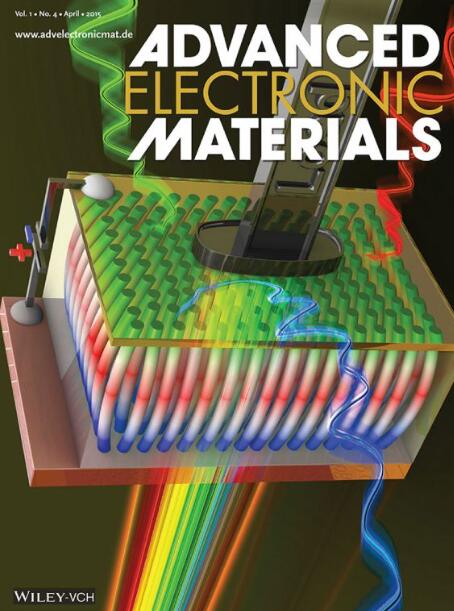Weyl Fermion Manipulation Through Magnetic Transitions in the Ferromagnetic Non‐Centrosymmetric Weyl Semimetal PrAlSi
IF 5.3
2区 材料科学
Q2 MATERIALS SCIENCE, MULTIDISCIPLINARY
引用次数: 0
Abstract
PrAlSi, a non‐centrosymmetric ferromagnetic Weyl semimetal candidate with a Curie temperature of 17.8K, offers a unique platform for exploring the interplay of symmetry breaking and topological electronic structures. Up to now, the Weyl fermion distribution as well as their evolution across the ferromagnetic to paramagnetic phase transition in PrAlSi has not been explored. Here, the presence of Weyl fermions is uncovered in PrAlSi and demonstrates that they can be manipulated through the magnetic phase transition. The ab‐initio calculations indicate a shift in the momentum and energy positions of Weyl fermions, alongside an increase in Weyl point numbers due to band splitting. The predicted band splitting and shifting of Weyl fermions are corroborated by the angle‐resolved photoemission spectroscopy experiments. Such manipulation of Weyl fermions leads to the appearance of a net chirality charge and a significant modulation in optical conductivity, as proposed by the calculations. The research presents a novel method for adjusting the properties of Weyl semimetals by controlling Weyl fermions through magnetic phase transitions, positioning PrAlSi as a model system.

通过铁磁非中心对称Weyl半金属PrAlSi的磁跃迁操纵Weyl费米子
PrAlSi是一种非中心对称的铁磁性Weyl半金属候选材料,居里温度为17.8K,为探索对称破缺和拓扑电子结构的相互作用提供了一个独特的平台。到目前为止,还没有研究过PrAlSi中Weyl费米子的分布及其在铁磁到顺磁相变中的演化。在这里,在PrAlSi中发现了Weyl费米子的存在,并证明它们可以通过磁相变来操纵。从头算表明,Weyl费米子的动量和能量位置发生了变化,同时由于能带分裂而增加了Weyl点数。角分辨光谱学实验证实了Weyl费米子的能带分裂和漂移。这种对Weyl费米子的操纵导致净手性电荷的出现和光学电导率的显著调制,正如计算所提出的那样。本研究提出了一种通过磁相变控制Weyl费米子来调节Weyl半金属性质的新方法,并将PrAlSi定位为模型体系。
本文章由计算机程序翻译,如有差异,请以英文原文为准。
求助全文
约1分钟内获得全文
求助全文
来源期刊

Advanced Electronic Materials
NANOSCIENCE & NANOTECHNOLOGYMATERIALS SCIE-MATERIALS SCIENCE, MULTIDISCIPLINARY
CiteScore
11.00
自引率
3.20%
发文量
433
期刊介绍:
Advanced Electronic Materials is an interdisciplinary forum for peer-reviewed, high-quality, high-impact research in the fields of materials science, physics, and engineering of electronic and magnetic materials. It includes research on physics and physical properties of electronic and magnetic materials, spintronics, electronics, device physics and engineering, micro- and nano-electromechanical systems, and organic electronics, in addition to fundamental research.
 求助内容:
求助内容: 应助结果提醒方式:
应助结果提醒方式:


